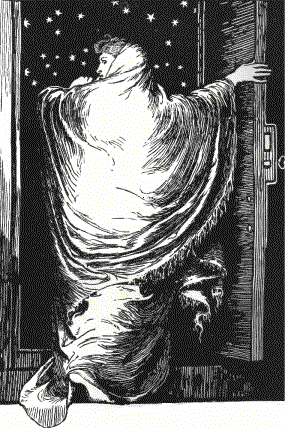While he lived there Wilkie wrote Rambles Beyond Railways (1851), Basil (1852), Mr Wray's Cash Box (1852), and Hide and Seek (1854). He was also contributing to Bentley's Miscellany (March 1851 - August 1852) and The Leader (September 1851 - August 1855). In 1851 he began his lifelong friendship with Dickens and began to contribute to Household Words (24 April 1852 onwards). Hanover Terrace was where Wilkie's literary career really began.
The Census of 30 March 1851 records six people in the house. There was Wilkie himself, whose profession is still listed as 'Law Student', his mother, and his brother Charles listed as 'Artist'. Apart from the family, Frances Giddes, a friend aged 17 was visiting, and there were two servants, Fanny Green, cook aged 25, and Emily Ballard, house maid aged 26. There is no evidence that the Collins' had a coach, in fact quite the contrary. But the back of the house, which gives onto Hanover Mews, listed James Greenway, coachman aged 49, with his wife Grace and five children including John aged 13 who was an errand boy.
It was also the time when he and and his brother Charles deepened their involvement with the extensive literary and artistic circle of the mid-nineteenth century. Charles was a pre-Raphaelite, though not actually in the Brotherhood, and the family entertained a great deal, on one occasion in 1852 giving a dance for 70 people. Among the visitors were E M Ward, Holman Hunt, Dickens, and John Everett Millais. It was on a walk from 17 Hanover Terrace back to Millais's family home at 83 Gower Street in the early 1850s that Wilkie is supposed to have had a dramatic and life-changing encounter. The Collins brothers were accompanying Millais home; at the time that part of London was semi-rural and badly lit. The source is the biography of Millais by his son, John Guille Millais, published in 1899.
"It was a beautiful moonlight night in the summer time, and as the three friends walked along chatting gaily together, they were suddenly arrested by a piercing scream coming from the garden of a villa close at hand. It was evidently the cry of a woman in distress and while pausing to consider what they should do, the iron gate leading to the garden was dashed open, and from it came the figure of a young and very beautiful woman dressed inflowing white robes that shone in the moonlight. She seemed to float rather than to run in their direction, and, on coming up to the three young men, she paused for a moment in an attitude of supplication and terror. Then, suddenly seeming to recollect herself, she suddenly moved on and vanished in the shadows cast upon the road."
Collins dashed after her and reported the next day that she had related her sad story of being kept a prisoner through mesmeric influence and threats of violence in a villa in Regent's Park. The passage concludes, darkly,
"Her subsequent history, interesting as it is, is not for these pages."
This account is traditionally taken to be the moment when Wilkie met Caroline Graves, with whom he was to live for most of the rest of his life, and also as a source for the dramatic meeting between Walter Hartwright and Anne Catherick in The Woman in White. Neither is probably true.
The Millais biography was published in 1899 when all the parties were dead and although the meeting has similarities to the account in The Woman in White there were nearly forty years for them to get confused.
The Woman in White, 1860, Bk.I, ch.4
Poster designed by Fred Walker in 1871 for
the stage version of The Woman in White
Nor was Caroline Graves a prisoner. She was in fact keeping a second hand shop near Fitzroy Square. The most direct route from Hanover Terrace to Gower Street passes nearby. So perhaps they did meet on one of these walks - perhaps Wilkie even rescued her from some real or imagined threat - and the story became embroidered as it was told to (male) friends over brandy and cigars.
5 January 1997
Version 1.1 adding census information